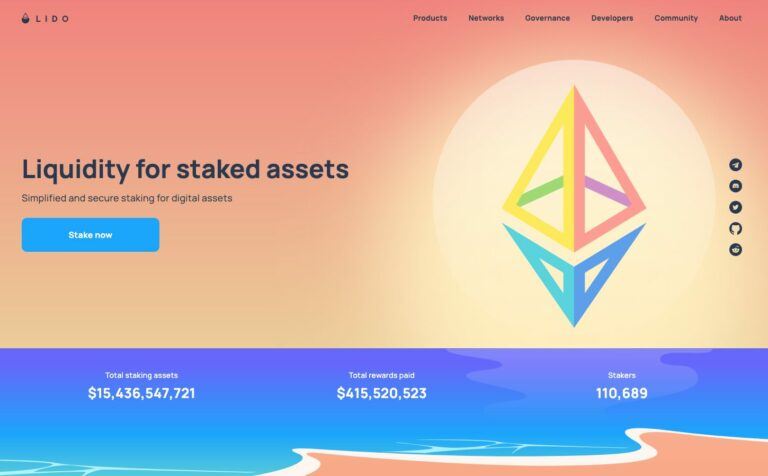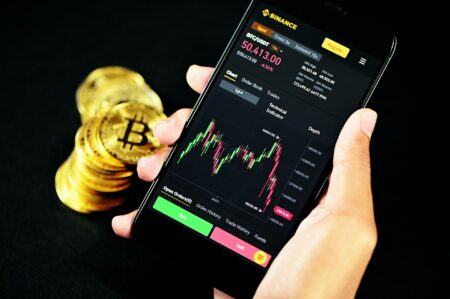On Monday (May 9), the world’s largest crypto exchange by trading volume, announced its plan for $LDO, the Ethereum-based token that grants governance rights in the Lido DAO.
What Is Lido?
Lido, which was introduced on 15 October 2020, is “a liquid staking solution for ETH 2.0 backed by industry-leading staking providers.” It “lets users stake their ETH – without locking assets or maintaining infrastructure – whilst participating in on chain activities, e.g. lending.” Lido “attempts to solve the problems associated with initial ETH 2.0 staking – illiquidity, immovability and accessibility – making staked ETH liquid and allowing for participation with any amount of ETH to improve security of the Ethereum network.”
According to the Lido FAQ, here is how Lido works:
“When staking with Lido, users receive stETH tokens on a 1:1 basis representing their staked ETH. stETH balances can be used like regular ETH to earn yields and lending rewards, and are updated on a daily basis to reflect your ETH staking rewards, minus any penalties.
“Note that there are no lock-ups or minimum deposits when staking with Lido. When using Lido, users receive secure staking rewards in real-time, allowing for participation in the securing of Ethereum with fewer associated risks and less downside potential.
As for stETH, this is “a token that represents staked ether in Lido, combining the value of initial deposit + staking rewards – penalties.” These tokens are “minted upon deposit and burned when redeemed.” stETH token balances are “pegged 1:1 to the ETH that is staked using Lido”. stETH token balances are “updated when the oracle reports changes in total stake every day.” stETH tokens can be “used as one would use ETH, allowing you to earn ETH 2.0 staking rewards whilst benefiting from, among other things, yields across decentralised finance products.”
Regarding the $LDO token, Lido’s white paper states:
“Lido DAO governs a set of liquid staking protocols with Lido on Ethereum among them. The Lido DAO decides on Lido’s key parameters (e.g., fees) and executes Lido upgrades. The Lido DAO members govern Lido to ensure its efficiency and stability. To have a vote in the Lido DAO, one must hold its governance token, LDO.
“LDO voting weight is proportional to the amount of LDO a voter stakes in the voting contract. The more LDO locked in a user’s voting contract, the greater the decision-making power the voter gets. The exact mechanism of LDO voting can be upgraded just like the other DAO applications.“
Andreessen Horowitz Becomes an Investor in Lido in March 2022
In a blog post published on March 3, the VC firm announced that it had invested in decentralized staking platform Lido.
a16z started by talking about difficulties with ETH 2.0 staking:
“Perhaps most notably, there is a 32-ETH minimum required to operate a node. This alone prevents a significant number of network users from running their own validator, and there is no native method for delegating one’s stake to circumvent these minimum capital requirements. Moreover, staking to the Beacon chain today is a one-way transaction – effectively locking up ETH until the transition from PoW to PoS – resulting in a high opportunity cost of capital given the abundance of yield-generating alternatives that exist in DeFi.“
It then talked about Lido and why they had decided to invest in it:
“It offers one of the easiest ways to stake ETH and other PoS assets today, while striving for decentralization through the DAO’s governance. Lido democratizes staking.
“The Lido community’s unwavering commitment to decentralization really stood out to us. They recognize that for their approach to succeed, they will need to create a fully-trustless staking pool while also embracing alternative solutions.
“Finally, Lido solves the competitive incentives between staking and seeking yield in DeFi. By issuing an Ethereum-native liquid token, Lido allows you to use staked ETH as collateral within DeFi in the same way you can use ETH currently.“
Binance Lists the $LDO Token
Around 7:06 a.m. UTC on May 9, Binance announced that it would be listing the $LDO token.
An announcement notice posted on the Binance website provided more details:
“Binance will list Lido DAO (LDO) at 2022-05-09 11:00 (UTC). Trading will open for LDO/BTC, LDO/BUSD, and LDO/USDT trading pairs… Users can now start depositing LDO in preparation for trading. Withdrawals for LDO will open at 2022-05-10 11:00 (UTC).“
$LDO’s Price Action
Although $LDO started today around the $2.83 level, by 9:42 a.m. UTC, the price had surged to over $3.95.

Currently (as of 11:30 a.m. UTC on May), LDO-USDT is trading around $2.40 on Binance.
Disclaimer
The views and opinions expressed by the author, or any people mentioned in this article, are for informational purposes only, and they do not constitute financial, investment, or other advice. Investing in or trading cryptoassets comes with a risk of financial loss.







